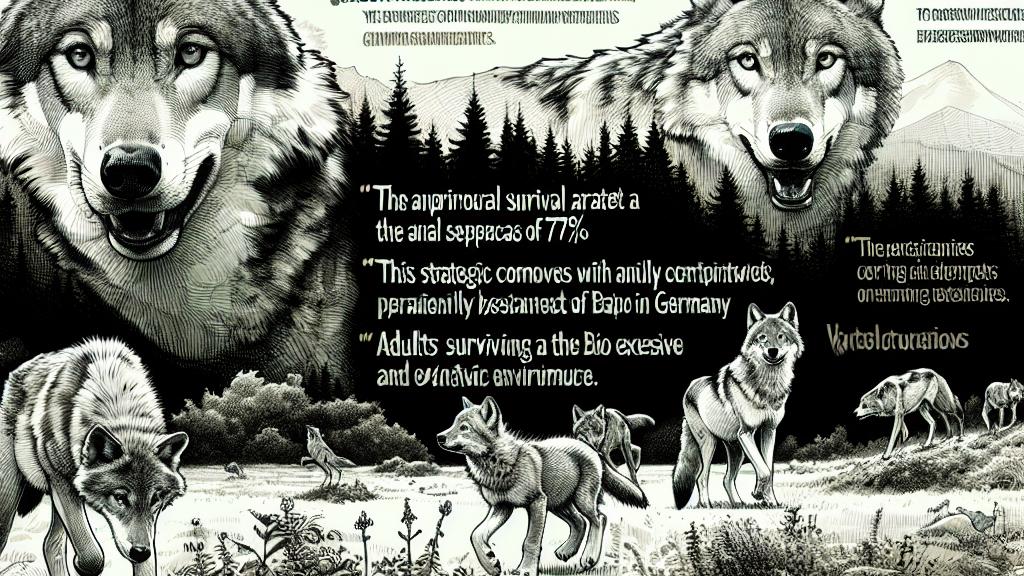The Rapid Expansion of Wolves in Germany: High Survival Rates Explained
Overview
- In just two decades, wolves have made a remarkable comeback across Germany.
- With survival rates soaring to 88% for adults and 75% for young, their population is flourishing.
- Strict legal protections and thriving habitats are crucial for sustaining this success.

The Inspiring Return of Wolves
The return of wolves (Canis lupus) to Germany in the last 20 years is a powerful testament to nature's resilience. Once hunted to near extinction, these majestic creatures have now reclaimed their place in Germany's diverse ecosystems, particularly flourishing in the green expanses of Bavaria. According to a pioneering study by the Leibniz Institute for Zoo and Wildlife Research, the survival rates of German wolves stand out on a global scale; young wolves have an impressive annual survival probability of 75%, while adults thrive at a staggering 88%. Such figures paint a vivid picture of success, highlighting how the favorable conditions within Germany's lush forests enable these animals to flourish. Indeed, these biodiverse landscapes not only provide ample prey but also essential cover, allowing wolves to navigate their territory with confidence. This resurgence isn't just a fluke—it's a strategic comeback backed by science and conservation efforts.
Factors Influencing Survival Rates
What drives these astonishing survival rates? The study reveals several critical factors that intricately weave together to foster such success. First and foremost, habitat quality plays a pivotal role. Wolves fare best in areas dense with forests that minimize human interaction; these environments offer both safety and resources. For instance, regions like the Bavarian Forest National Park serve as perfect examples, where dense woodland not only provides shelter but also abundant prey. Additionally, the robust legal protections enforced in Germany have been monumental; these laws guard against poaching and habitat destruction, creating a safe haven for wolves. Interestingly, while adult wolves can adapt to less suitable environments, their younger counterparts face significant challenges that lead to lower reproduction rates. By understanding these dynamics, researchers can better support wolf populations and their habitats, ensuring their continuation for years to come.
The Future of German Wolf Populations
As the wolf population continues to grow, experts predict an eventual plateau in numbers as available habitats reach their capacity. This imminent stabilization signals a crucial juncture for conservation efforts. The long-term monitoring data and genetic studies provide an in-depth perspective into the lives of these wolves. For example, knowledgeable female wolves often produce larger litters, enhancing population resilience. Moreover, as wolves establish territories and occupy prime habitats, it becomes essential to focus on sustainable management practices. The resurgence of wolves in Germany serves as an inspiring narrative not just for conservationists but also as a valuable model for wildlife recovery efforts worldwide. Celebrating this success means reinforcing responsible habitat management and ensuring that future generations can marvel at these magnificent animals in their natural settings.

Loading...